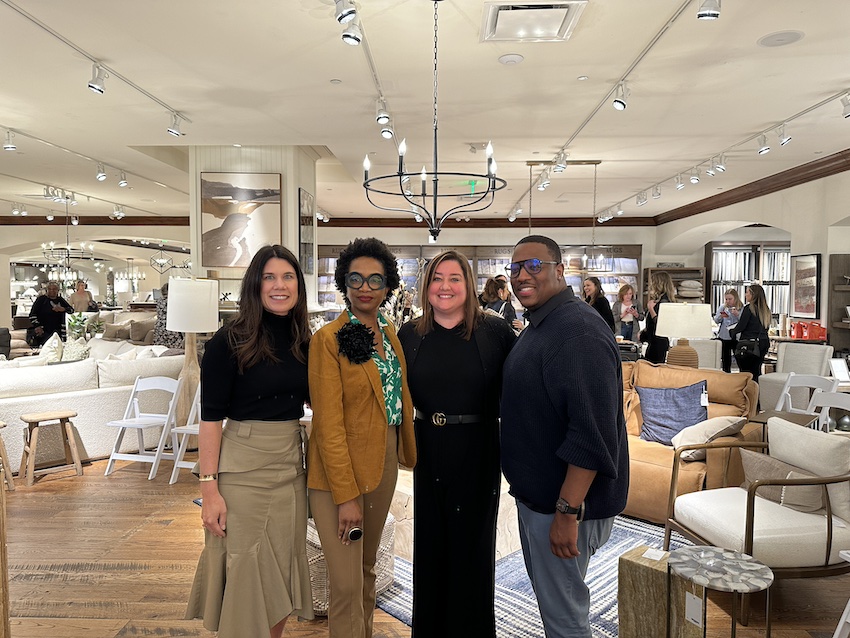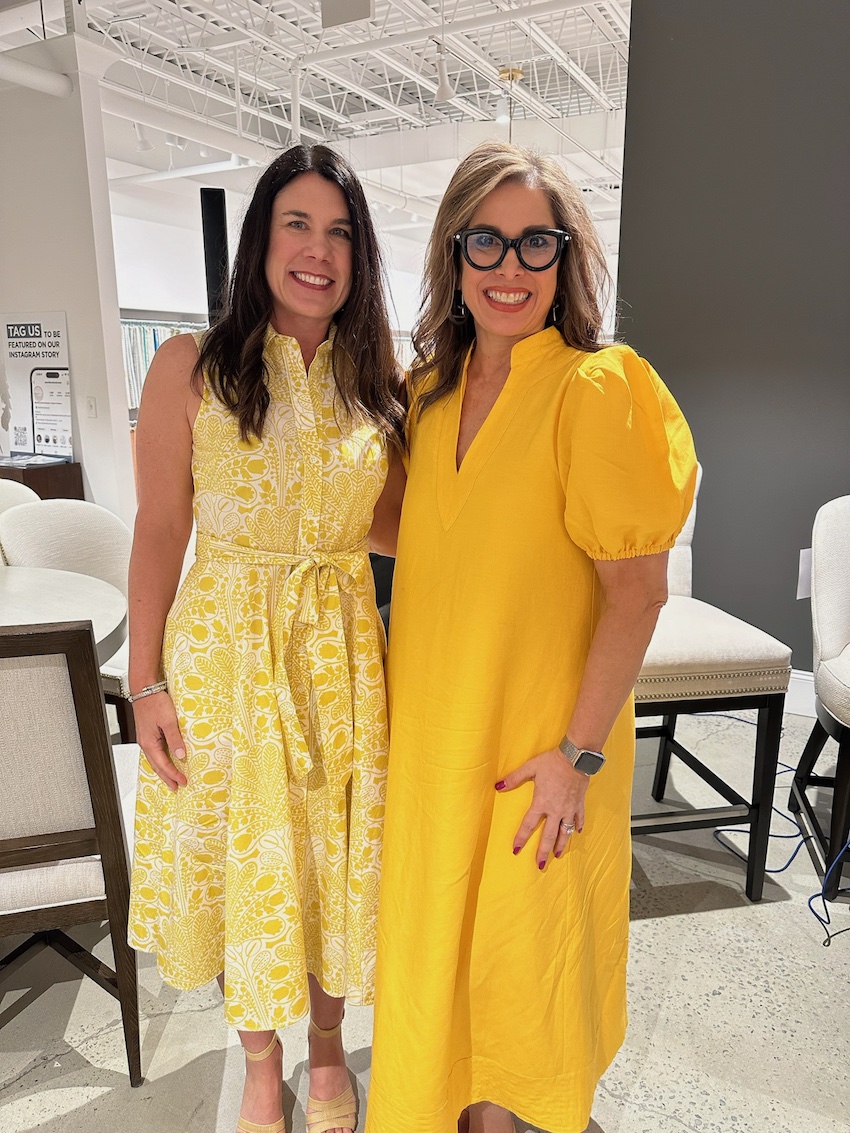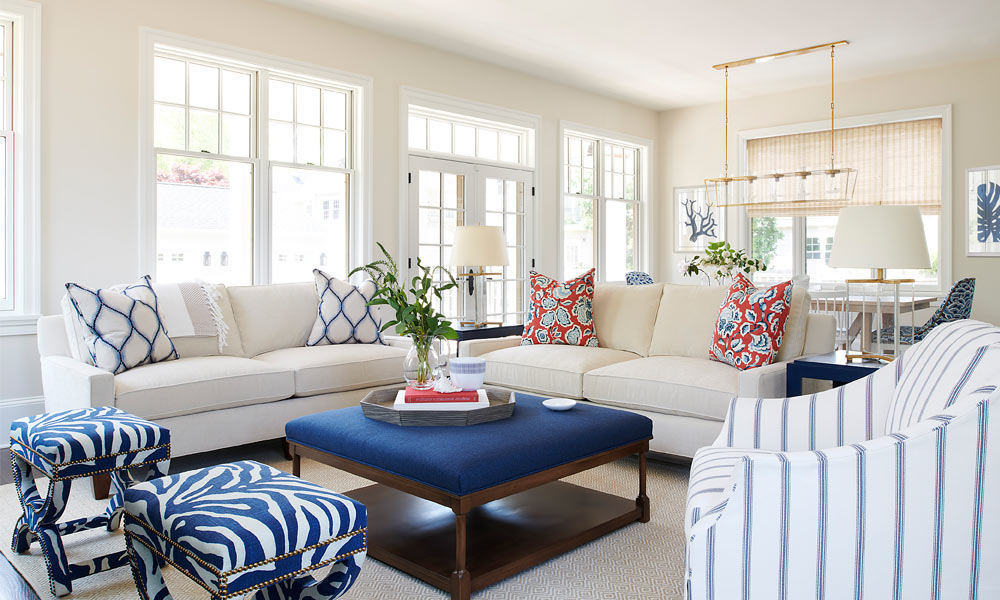
How to determine a design budget
One of the questions we hear most often is “how do I determine a design budget?” We recognize that the answer can be tough to work out, especially if you’ve never worked with an interior designer before. We’re here to help!
There is no one size fits all approach to determining a budget; everyone has a unique lifestyle, preferences, and needs that make your home personal to you. However, we have some tips to give you a starting point.
Define the scope
When we refer to “scope,” we’re asking what work you’re planning. For a kitchen, does that include a full renovation with new appliances, fixtures, finishes, and layout? Are you keeping some existing things like appliances and cabinetry, but doing new floors, surfaces, tile, paint, and lighting? We’ve done both. Sometimes the footprint will stay the same, while other projects may include an expansion.
If it’s a family room, living room, or master bedroom, the scope can vary as well. Some clients want to mix new and existing furniture pieces while adding accents like decorative lighting. Others go the whole nine yards, including new hardwood and paint throughout with all new furniture, lighting, and artwork. No project is exactly like any other that we’ve done, which gives us a lot of experience. Talking with an interior designer can help you gain an idea of the investment needed for your scope.
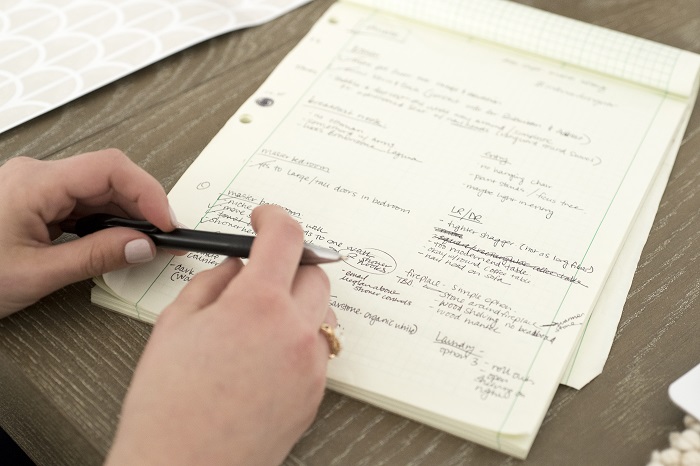
Glenna Stone Interior Design studio meeting; photo by Rebecca McAlpin
Break out costs
Once you know what the scope of work entails, start breaking out costs. Keep in mind that budgets are complicated, but creating line items helps you to see things in black and white. For our purposes, we put things into two categories: construction costs and decorating costs.
What are construction costs?
Construction costs include professional fees, labor, and materials. Materials, in particular, are pretty all-encompassing and vary depending on both the type of project and what you want. They include flooring, lighting, tile, paint, hardware, etc. For a master bath with Calacatta marble tile, high end plumbing and lighting fixtures, wallpaper, and multiple custom window treatments, you’ll need to budget more than a hall bath with ceramic tile, mid range fixtures, and one window treatment. In a kitchen redesign, doing a preliminary appliance and cabinetry layout with your designer will help you get into more detail. This gives you a better idea of cost at a high level.
Think about not only the design, but also what’s underneath. Will pipes need to be re-routed? Appliances reconfigured? New electrical run? You may also need to bring in a GC or builder to help you answer some of these questions. They do this all day, every day, and have years of experience and insight to offer. The more comprehensive your scope is, the more complete and accurate your budget will be.
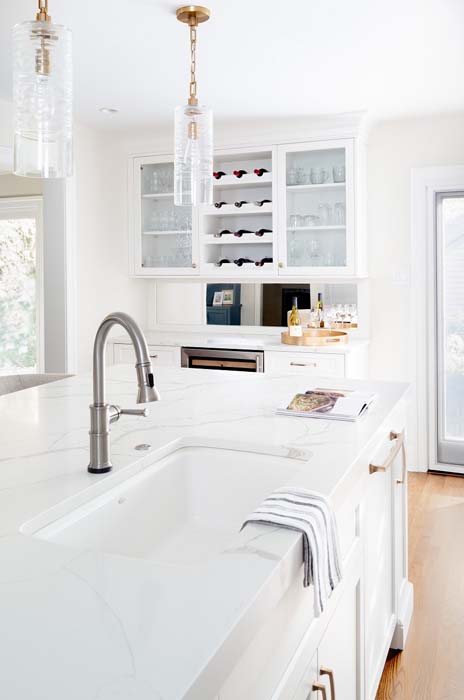
Kitchen by Glenna Stone Interior Design; Photo by Paul S. Bartholomew
What about decorating costs?
In this column, we factor design fees, furniture, accents, rugs, decorative lighting, and artwork. Essentially, consider anything that isn’t attached to the structure as part of this category. We develop a detailed budget after the furniture plan is finalized so we are able to create a line item for each and every item going into the space, and put dollar amounts to these items. For instance, we look at a space and suggest a sofa, two chairs, window treatments, a rug, tables, etc. Then we can estimate costs and recommend adjustments as needed. For instance, some clients want a custom dining table but choose more budget-friendly chairs to balance it out. With so many options available to us through our vendors, we can tailor your selections to your budget.

Dining room and sitting room by Glenna Stone Interior Design; Photo by Rebecca McAlpin
Our best advice
If someone were to ask us for three tips on how to best determine a design budget, they would be:
1) A pro can help you hone in on accurate costs, so it’s worth the investment. Bringing in a designer early saves both money and aggravation. We pride ourselves on transparency and honesty (even if it’s not always what our clients want to hear) in the interest of keeping you on budget.
2) Be honest with yourself about what you want. If you want the marble bath and the the high appliances plan for that upfront. You can always scale back if you need to cut back.
3) Be flexible. Plan for the unexpected, and we suggest adding 15-20% of the budget for unanticipated fees or material costs. If you’re uncomfortable with the numbers, wait. We want all of our clients to enjoy the process and no one has ever regretted waiting a few months to be able to get what they want.
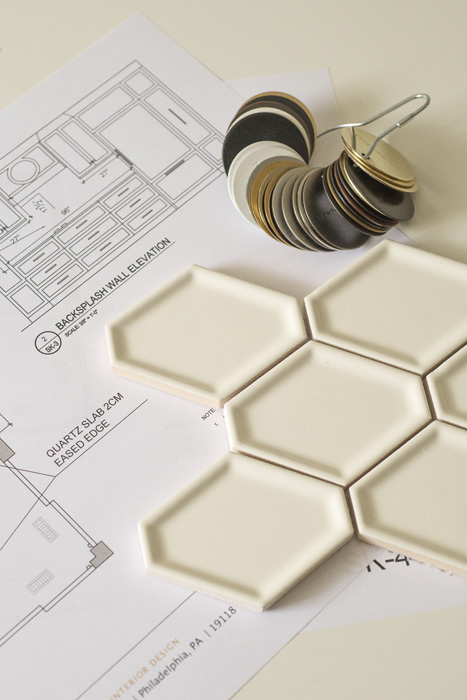
Plan and finishes; Photo by Rebecca McAlpin
By the numbers
With all of this being said, you’re probably still wondering about numbers. When we speak with prospective clients, we’re able to discuss both fees (i.e., what we bill for research, planning, site visits, sourcing) and construction/design and furnishing costs. We’ve arrived at these figures through our extensive history with a variety of projects. Keep in mind that they can vary greatly by project depending on the size and complexity of the space, but they do provide a good baseline for our conversations. We hope they can help you as well! These numbers are based on moderately sized spaces.
Kitchen: Construction costs $75-150,000 and up.
Master bath: Construction costs $35,000 and up.
Family or living room: Furnishings inclusive of lighting, accessories, window treatments, rugs $25,000 and up (using existing furnishings can lower these costs).
Header image: Family room designed by Glenna Stone Interior Design; Photo by Rebecca McAlpin
Want our weekly blog post delivered right to your inbox? Click here to sign up!
________________________________________
Glenna Stone Interior Design is an award-winning Philadelphia interior design firm serving Philadelphia, the Main Line, and surrounding cities. Utilizing her background and training in interior design, architecture, and engineering, Glenna specializes in creating interiors for residential and commercial design settings. We invite you to visit our website, view our portfolio, and catch up on the latest interior design concepts on our blog!






